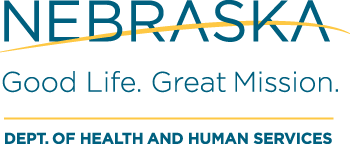Overview
By bringing together state and local agencies, leaders and citizens, Bring Up Nebraska is helping to ensure that every community across Nebraska is working to increase the availability of critical supports and services, reduce unnecessary government system involvement, and improve the lives of Nebraska children and families. The United States Children’s Bureau recently selected Nebraska to participate in an opportunity called Thriving Families, Safer Children (“Thriving Families”) due to the progress that has been made by the community well-being collaboratives in the Bring Up Nebraska Initiative.
Bring Up Nebraska’s Community Well-Being (CWB) model is based on the belief that all individuals and families face challenges, and that providing support early, before challenges escalate into crises, improves outcomes for children, adults, and communities. Local communities are the foundation of our work because they are best situated to provide services and supports that build protective factors and resilience to future challenges, and because decision-making about what works for well-being lies within communities and homes of our families.
Our Focus
- Reshaping the current child welfare system to better support the CWB model by collaborating with other partners and providing aligned funding, supports, and services.
- Ingraining of the CWB model within the state government and local communities so it continues as the operational norm regardless of political or administrative leadership changes over time.
- Including families, youth, and other community members in the leadership and decision-making process at both state-wide and community levels.
Thriving Families Joint Meeting: NE Steering Committee & National SST
How is the National Site Support Teams (SST) structured?
The SST will be the key support team for each of the Thriving Families jurisdiction. The team will meet regularly (*every other month in 2021) as an independent unit and with the jurisdiction to help plan and implement jurisdictional efforts and serve as a resource and support hub that has knowledge of and access to partner resources. The teams will work seamlessly at the partner organizational level to determine what resources and support can be provided by whom in a highly integrated way to support the Thriving Families jurisdiction’s plan. These teams will have the ability to call upon the MDT as needed (consisting of expert consultants from needed fields of expertise, in addition to relevant partner agency resources). The representatives on SST have direct access to the Executive Team representatives of their organization for higher level decision making or support as necessary, including barrier busting support at the federal level.
Who are the members of National Site Support Teams (SST)?
The SSTs will be a collective group of interagency and interdisciplinary representatives to ensure that they are working together in transformational ways. The members will include: 1) parent expert; 2) youth expert; and 3) equity experts. In addition to above representatives, each Site Support Team will include: 4) U.S. Children’s Bureau/Federal agency partner lead; 5) Annie E. Casey Foundation lead; 6) Prevent Child Abuse America lead; and 6) a Casey Family Programs lead. The SST lead from each of the four partner agencies will have clearly delineated roles and responsibilities to best support the Thriving Families jurisdiction. This includes the ability to rapidly escalate barriers that require additional support as well as to escalate areas for opportunity that may strengthen the work of all Thriving Families sites. To ensure that the Executive Team is fully informed of the Site Support Teams work, a representative from each of the team will present the team’s project status regularly to the Executive Team.





